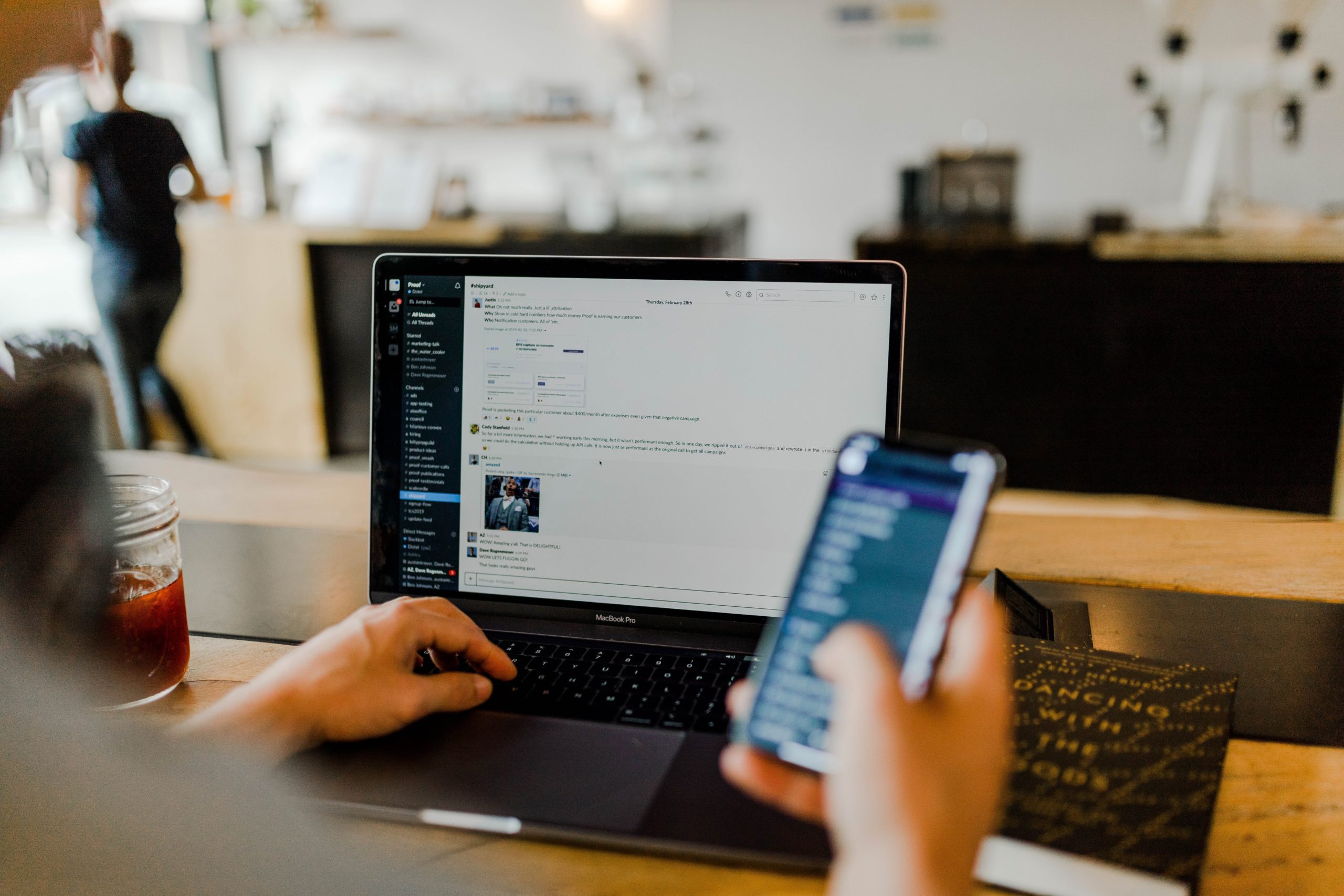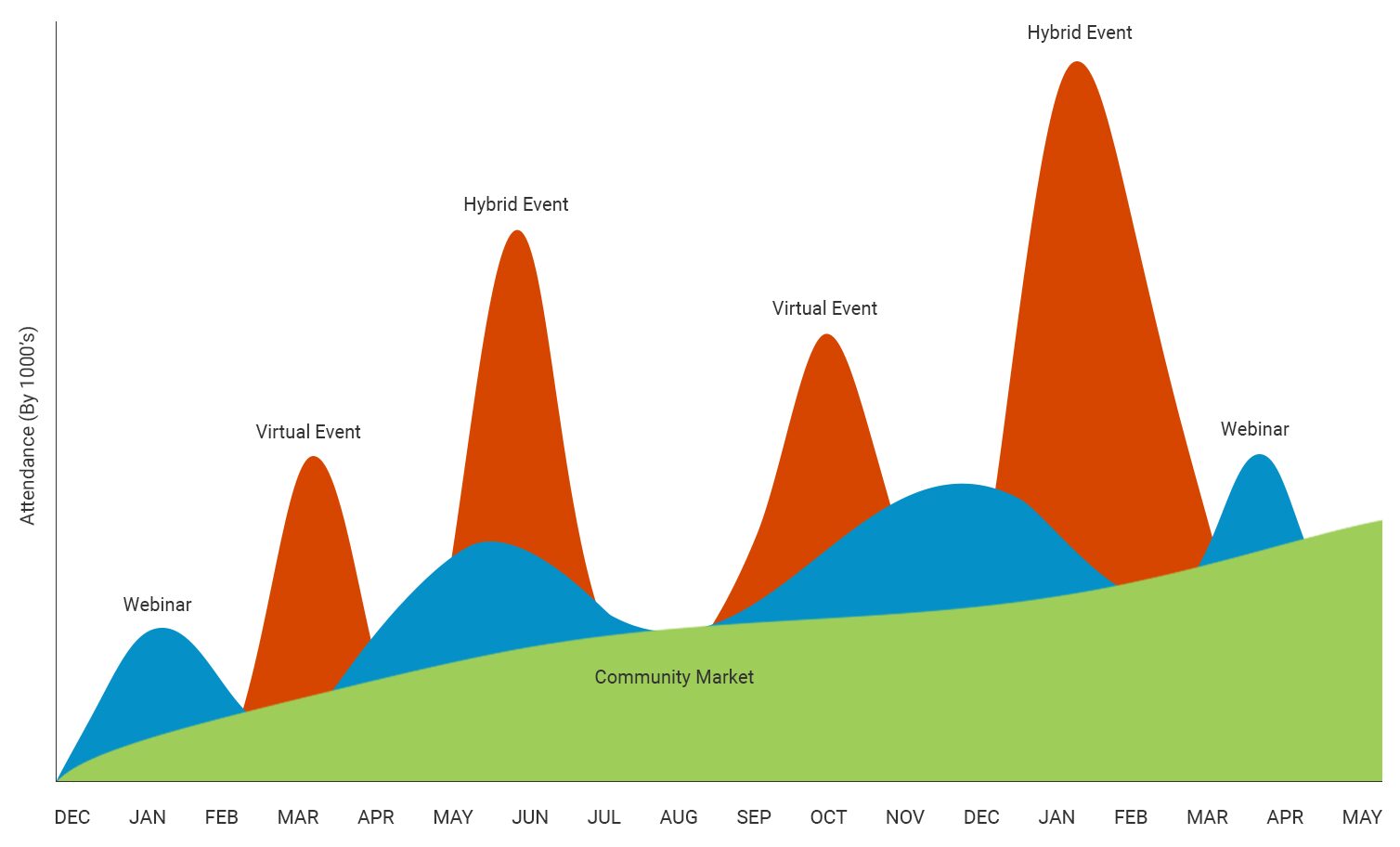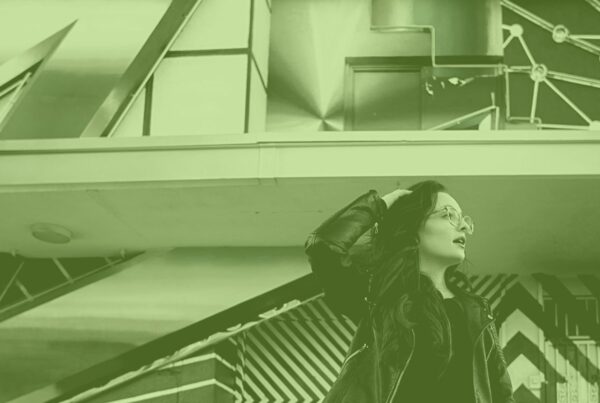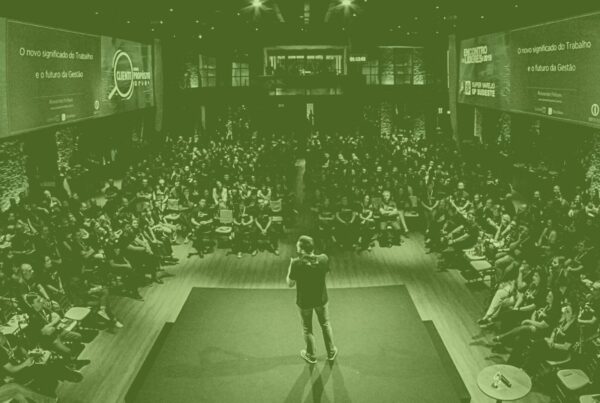In one of our recent blog posts, we explained why event technology should be the building block of your event strategy. Not just because innovative data science helps us understand our attendees better, but because we can, thanks to technology and event platforms, stay connected with our attendees, sponsors, and vendors throughout the entire year. We’re talking about the community model: one of the most exciting event trends of 2022!
Perhaps the events industry and event marketing used to be mostly concerned with big, one-off in-person events, but that’s no longer how the world functions. The pandemic ushered in changes that many event planners are still getting adjusted to, such as the normalization of virtual events, futuristic event technology, and new ways of delivering content.
The community model sits at the intersection of these changes. No wonder it is one of the biggest event trends to keep an eye on in 2022! Community marketing, in general, has been around for ages, though, and those who have harnessed its power have enjoyed high rewards.
What Is Community Marketing?
As the name suggests, community marketing means creating a community around your brand. It’s a well-known fact that people express their identities through products they purchase and, even more importantly, the communities they belong to. Because community marketing doesn’t rely on tactics of persuasion, but rather on a sense of belonging, it is one of the most effective marketing strategies.
Community marketing connects like-minded people and gives them a space where they can discuss ideas, learn, network, and give you feedback about your products – all year around. This in turn fosters loyalty and transparency. By giving your customers an active voice, you know what they expect from your brand and communicate directly with them. Not only are your customers happier; community marketing also gives you deeper insight into your ideal customer profile, which in turn can help you scale your business.
Naturally, the community needs a (typically virtual) space within which it operates. Depending on your customers’ demographics, that can be Facebook groups, LinkedIn, and other social media platforms, forums, Slack channels, and virtual event platforms. Since members of your community can access that platform all year round, this phenomenon recently became quite the buzzword in the events industry as a community model or community engagement.
 Community Model: The Perfect Synergy Of Content & People
Community Model: The Perfect Synergy Of Content & People
It’s no wonder we talk about 365 community engagement (rather than community marketing) in the events industry; ever since the pandemic started nearly two years ago, event planners started worrying about virtual audiences and the levels of their engagement with a burning passion. Despite all the lessons learned, it still remains one of the most talked-about topics in the industry and one of the top concerns when it comes to virtual and hybrid events.
With in-person events and the magic of serendipitous conversations out of the equation, the focus fell nearly solely on content to save the events industry. The events industry started learning what YouTube creators have known for years now. Virtual content had to be delivered in a certain way; bite-sized pieces of information go further than death by PowerPoint, and so does high-quality production!
But while event profs perfected the art of virtual production, they never forgot the most important thing: events are not (just) about the content – it’s all about the attendees and human connections. And so, the community model is the perfect union of the two: the people and the content.
Communities Live On Event Platforms
And where does this happily married duo live? On event platforms, of course! Event platforms are the go-to place for people to register, get to know one another, and engage with virtual content, such as webinars, pre-recorded sessions, podcasts, and virtual or hybrid events. Events are no longer the sole purpose why people use the event platform. They still have an important function, though: they bring your community together and draw new members in.
Kyle Kocinski, Endless’ head of implementation, summed up the perks of the community model in a recent Event Tech Podcast episode.
“Bringing your events into a community allows for your attendees, sponsors, or vendors to play a bigger storyline in your overall event strategy. They can see why they’re a part of your event. You’re not just having them come to a one-off event. You’re having them come back, ask questions, and contribute to ideas for content. Your attendees are now playing a role in the story rather than just watching it.”
It’s crucial members find value in a 365 community model, otherwise, the community will soon start losing followers and eventually fall apart. You need to know your community well: understand what kind of content they want to see and why they joined your community market in the first place.
Community Model: Conclusive Thoughts
The 365 community model allows you to keep your attendees engaged at all times. While they wait for your next event, they can enjoy webinars, check out upcoming and past events, and meet other members in organic ways. This trend is surely going to explode in the upcoming months and years. Event platforms are already offering annual subscriptions and event planners are looking for effective ways to keep their attendees connected in times of uncertainty.
If you’re curious to see how Endless Events does it, check out our community! And if you’ve got any questions about the community model or event technology, production, and strategy in general, do not hesitate to reach out. As always, the Einsteins of Events are here to help.











